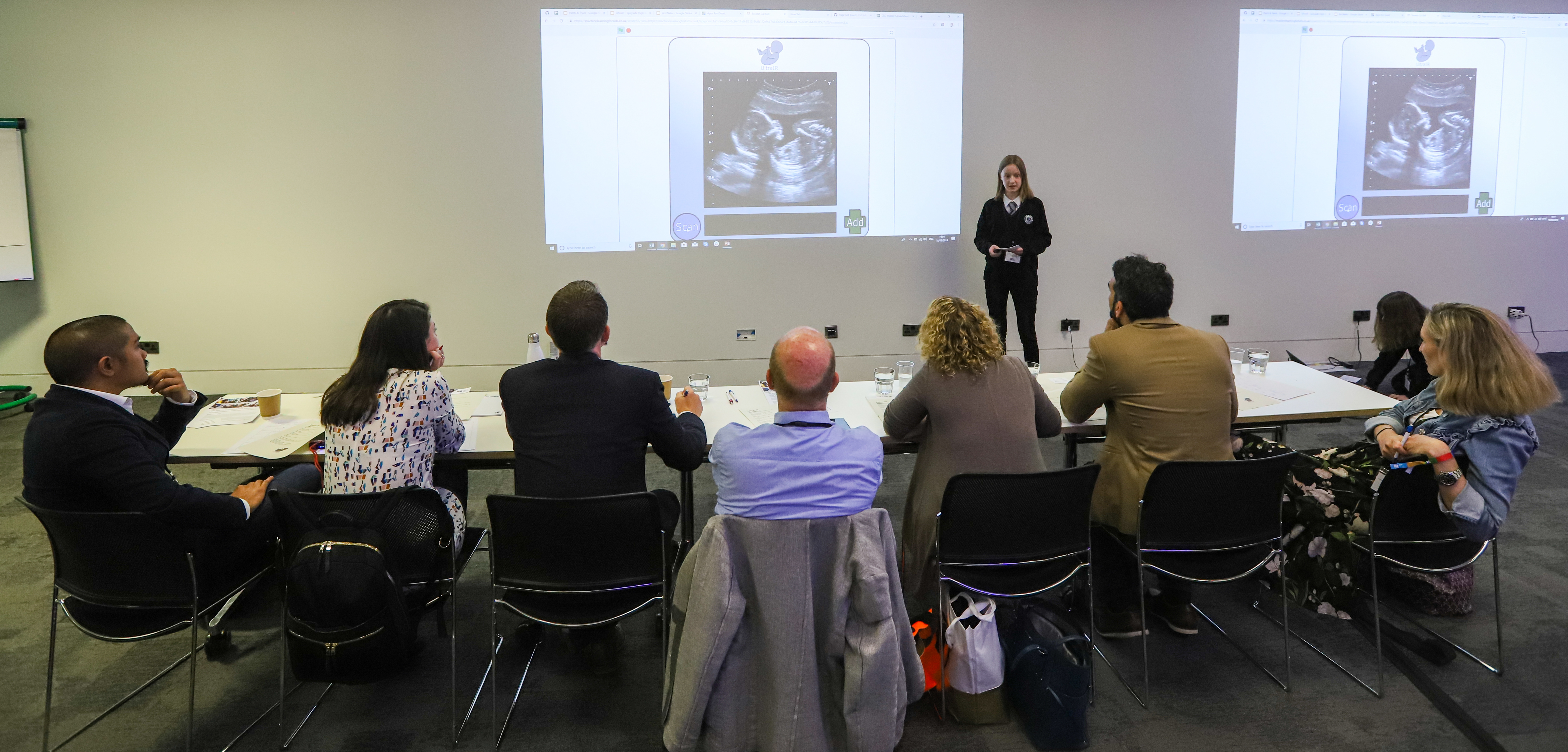AI and the Future of Work

On 10 June 2021, Apps for Good participated in a panel session on Artificial Intelligence and the Future of Work, hosted by our partners the National Centre for Computing Education (NCCE).
The panel was chaired by author, education consultant and BETT advisor Beverly Clark from Computing at School (CAS). The other panel members were Profession Simon Peyton Jones, computer science research at Microsoft Research, Chair of NCEE and co-founder of CAS; Jon Chippindall, primary school teacher and visiting academic at The University of Manchester; and, Dr Zoe Webster, Artificial Intelligence Director, Data and AI Solutions, BT Group.
Our CEO Heather Picov had the opportunity to discuss our machine learning course, sharing the learnings we’ve had from thousands of students globally taking our course.
Here are our top seven learnings to engage a truly diverse group of students with the knowledge, skills and mindset for the age of artificial intelligence.
1. Don’t start with the tech. Instead start with what the technology can do and how it can be applied to solve problems, as well as how it is creative and collaborative.
We’ve learnt that starting in what feels like a ‘code free’ zone is more welcoming and safe for some students. This is especially critical for girls and other young people who don’t necessarily see technology as ‘for me’.
2. Keep it relevant to students’ lives and to get under the hood of these technologies.
For example, we have students recreate Instagram’s anti-bullying filter so they can understand how it works. We also use examples from Netflix, Spotify, Youtube, and Amazon, showing young people how they already come across artificial intelligence all the time. This is an important context for young people: AI is not some scary future technology with robots taking over, but is being employed right now and is already a part of their everyday lives.
3. The ethics surrounding artificial intelligence really interests students.
Young people want to talk about issues of equality and fairness, the use of their personal data, echo chambers, facial recognition technology, and onwards. We’ve seen that having considered debates around these issues motivates students of all backgrounds.
4. Start early and ensure its accessible
Our Machine Learning courses start at Year 9. Our aim has been to hit the sweet spot between an entirely tech-free unplugged approach on one end, to one involving the most advanced maths and statistics on the other end of the spectrum. Students need to know how AI impacts their lives, how it works and how it can be applied to solve problems
5. Bring industry into the classroom
We have partnered with industry experts to build our course and then we bring these volunteers right into the classroom, where they give students feedback on their projects. We have volunteers from companies such as Lego, Spotify, BNY Mellon, SAP, Salesforce, Google, and many more.
This has been a useful scaffolding for teachers as it fills in gaps in their knowledge, as well as helps motivate students when things get tough. It also shows the young people how directly their learning connects to real jobs, real work that’s happening right now. And it boosts young people’s confidence because someone from industry is taking them and their ideas seriously.
6. Support teachers
We‘ve seen that our teachers are really excited about this and they want to upskill themselves. For instance, we thought during the pandemic teachers would be unlikely to take this on as it’s new and might be seen as too challenging, but we’ve had teachers start this during the UK lockdowns, as they wanted something creative and relevant for their students to work on
7. Young people’s creativity is endless
We get students working in teams developing a product using an iterative approach, where they learn to build fast, get feedback from users, going from problem to prototype to pitch just like in the business world. Students build their skills in teamwork, communication, design and research. They develop their confidence and resilience, learning that failure is part of the problem solving process
Students must come up with their own idea for the product - it can’t be provided by us or the teacher. This is challenging and we have found that coming up with machine learning products is more difficult than in our other technology streams
While there are broad and large-scale applications for machine learning, we’ve learned that it’s useful for young people to work on a project that’s relevant to them. We’ve seen that this motivates students’ learning because they are working on a project that they really care about.
Plus, this approach generates some really creative ideas. We’ve had products using machine learning to make revision easier, to improve dental health, to reuse everyday objects to keep them out of the rubbish, and to make ultrasound scans more efficient and accessible.
We’re working with hundreds of schools right now and we’d love to hear from you if you want to get involved.
Thank you to the National Centre for Computing Education for inviting us to participate in this event and share our thoughts on this important debate.